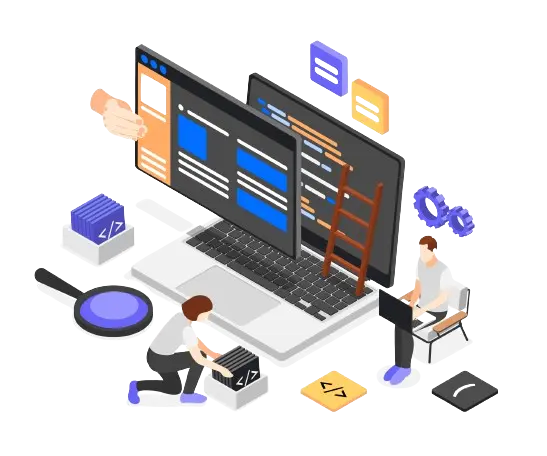Web Design & Development Services
Growth-driven design is an enhanced method of web design that uses data to drive outcomes and remove problems. Month after month, as you track, refine, and modify your website, it gets better. Growth-driven design produces outcomes and adds value to clients' websites. A close-knit group of skilled digital-first consultants work at the highly experienced, growth-driven design firm Admirror.
Our team of skilled website developers and seasoned digital marketing experts uses the newest tools and tried-and-true techniques to build dynamic web apps and user-friendly business websites, then markets them to increase their audience's reach. Employ our website developers to build a powerful online presence that will open doors for you.

What is Growth-Driven Design?
Advantages of Design Driven by Growth:
Faster launch of websites
Growth-Driven Design (GDD) is a methodology that emphasizes a more agile and iterative approach to website design and development compared to traditional methods like Waterfall. In GDD, the website is launched quickly with a core set of features and functionalities, and then it’s continuously improved and refined based on user feedback, data analysis, and evolving business needs.
This approach allows for faster deployment of the initial version of the website, enabling businesses to start generating value sooner and then incrementally enhance the website over time.
Quicker payback period
Big impact
Maximum possibility for conversion
Data-based design and development
How Do We Put Growth-Driven Design Into Practice?
Strategy Phase:
- Acquiring knowledge about the world (needs, pain points, challenges) of your users
- Figuring out how the website can address issues that arise during their journey
- Making changes to the website with the customer in mind by using data
- Establishing specific goals
- Creating a workable implementation strategy
- Analysing and placing competitors
- Building the website's foundation (home page, goods page)
- Creating the messaging and content
- Architecture of information
- Wireframing and design
- Development and programming
- Basic user experience testing
- Ongoing gathering of user information
- Quickly figuring out what works and throwing out what doesn't
Launch Pad Phase:
Continuous Improvement Phase:
- Maintaining user data collection (traffic analytics, heatmaps, click tracking, A/B testing)
- Determining and implementing high-impact strategies (conversion path, design, site structure, landing page, and content optimisation).
- Delivering benefits to users
- Constructing and evaluating extra site components
- Assessing success indicators
- Comparing the website's performance to the objectives
- Creating specialised marketing efforts to increase visitors to fresh material on websites, blogs, emails, social media, etc.
- Finding out what functions and what doesn't

